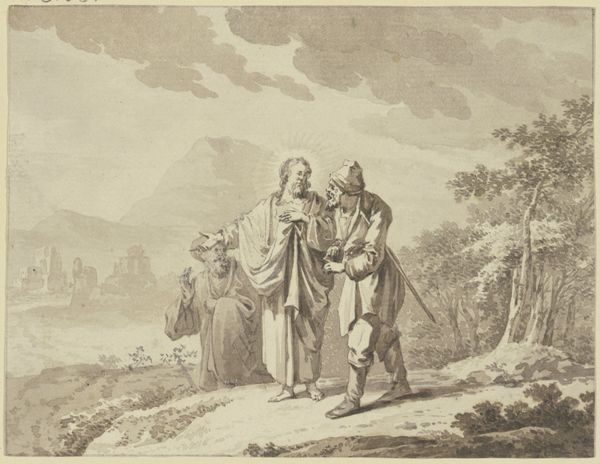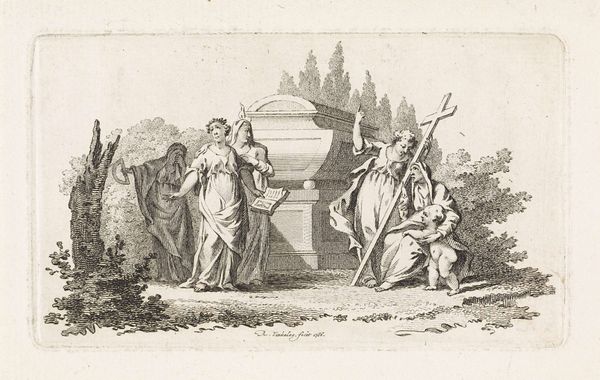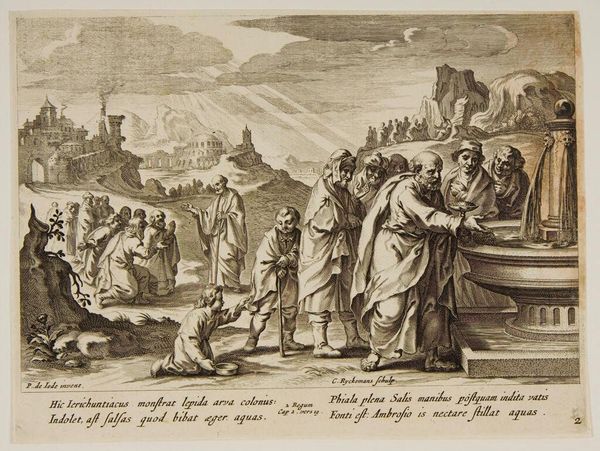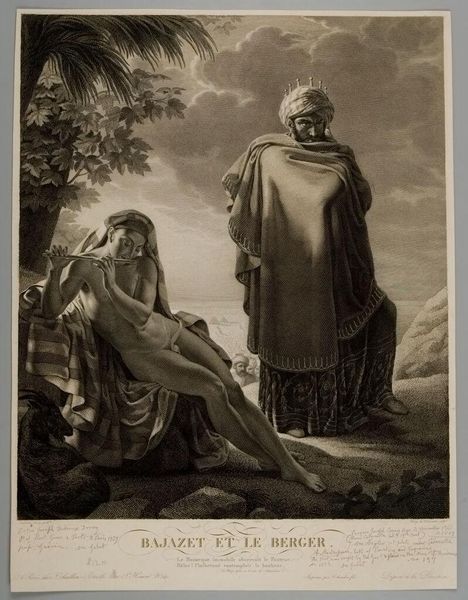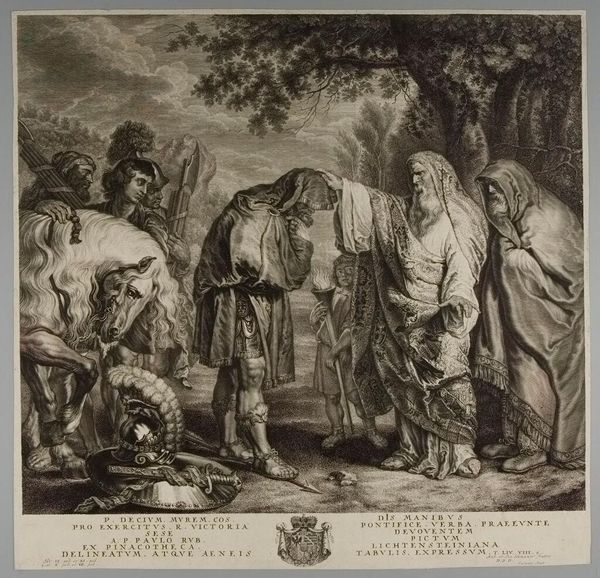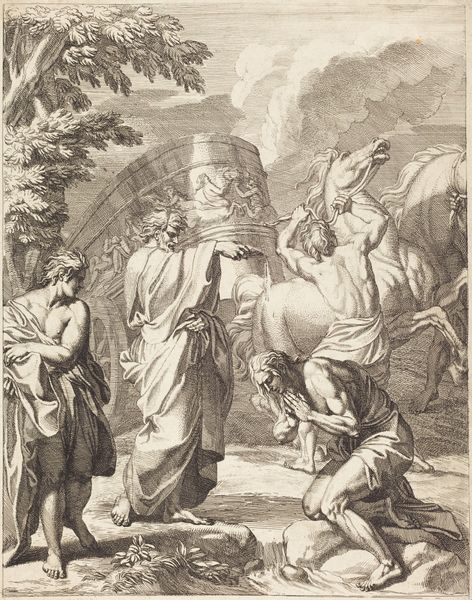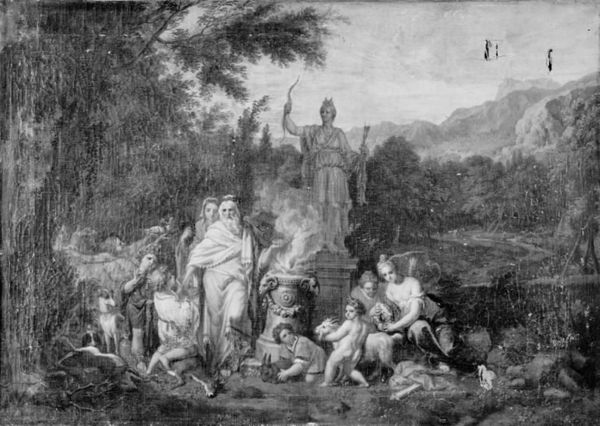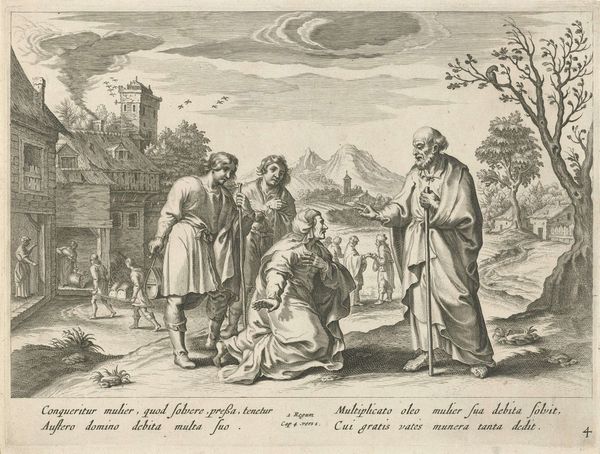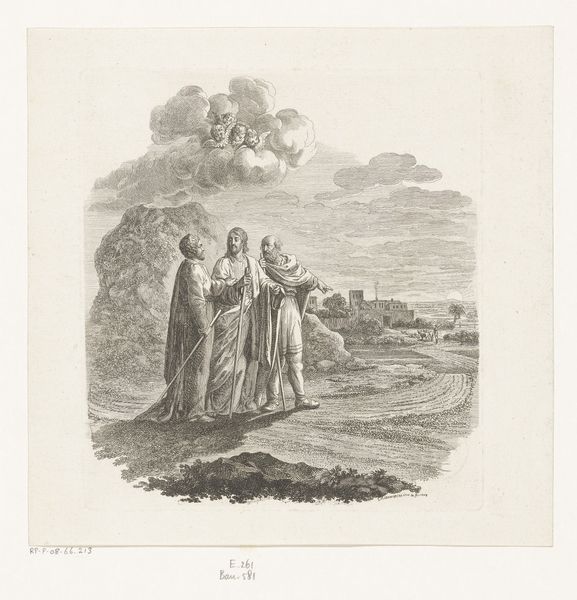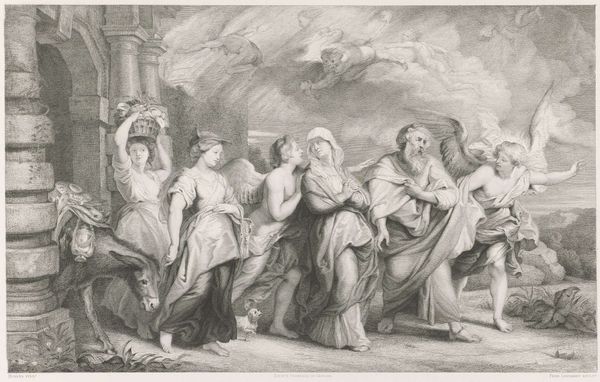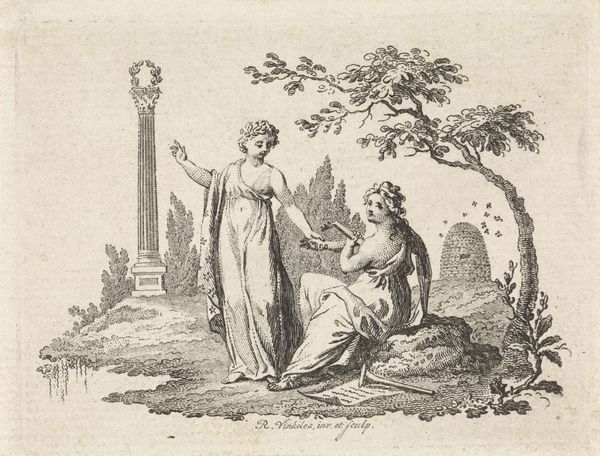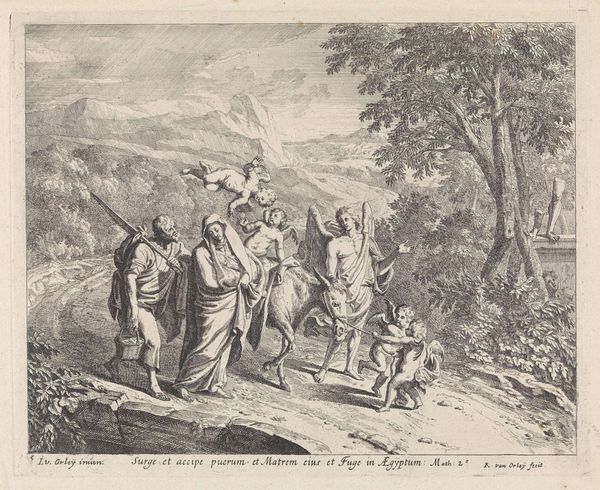
drawing, paper, ink, chalk
drawing
baroque
landscape
paper
ink
chalk
history-painting
italian-renaissance
Dimensions: 168 × 235 mm
Copyright: Public Domain
Editor: Here we have Claude Lorrain's "Study for Pilgrims at Emmaus," made around 1652, using ink, chalk and paper. It strikes me as surprisingly muted, given its historical subject matter. What can you tell me about it? Curator: It's fascinating how Lorrain, though rooted in the Baroque style, prefigures later landscape sensibilities. Look at how the religious narrative is almost subsumed by the landscape. To me, it speaks to the decentralizing of religious authority that was burgeoning in that era. What do you think about the positioning of the figures? Editor: I see what you mean. They're not centered; the landscape seems just as important. Are you saying that the placement of these figures could reflect societal shifts in power dynamics? Curator: Precisely. And consider the "pilgrims" themselves. Pilgrimages are tied to notions of penance and potentially even power structures. What narratives are subtly being questioned through the receding importance of these figures against the vastness of nature? Editor: That makes me reconsider how I originally perceived the figures and the landscape, with each kind of blending into the other. I didn't think of pilgrimages representing power structures previously, but this context casts everything differently. Curator: Art often serves as a silent mirror to societal evolution. It invites us to critically assess the narratives we inherit. Even within a religious context, there can be progressive nuances about identity, about our human role within the world around us. What do you take away from this piece? Editor: I appreciate your insight into seeing how a seemingly traditional religious artwork can reveal changing societal attitudes towards established powers. Now, it encourages me to question and observe how cultural values interact within these representations. Curator: Precisely. That's how art history bridges with contemporary theory, illuminating our present.
Comments
No comments
Be the first to comment and join the conversation on the ultimate creative platform.
